

Church facing the courtyard next to the parish church |

|
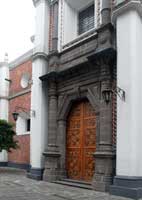
|

|
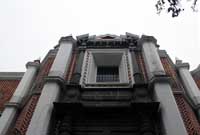
|
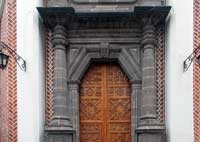
|
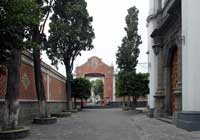
|
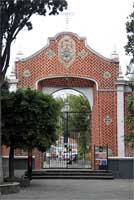
|
The gateway from the inner courtyard |
According to an unpublished manuscript by Richard Perry, this tiled gateway may be the earliest surviving component of this conventual complex. The panel in the gateway of the Virgin of Carmen may predate the gateway even. The wall surrounding the complex and the ceremonial gateway | ||

|

|

|
The panel with the Virgin of Carmen framed by painted stucco angels; petatilla brickwork (herringbone patterns) on the walls and gate |
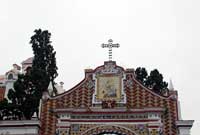
|

|
| The insignia of the Discalced Carmelites: according to this site the coat of arms signifies the following: "In the center of the seal is Mount Carmel, cradle of the order, its tip reaching to the sky. It refers to Mount Carmel, the Carmelite’s place of origin in Haifa, Israel. In the 9th century BC the prophet Elijah lived and had a profound experience of God there. In that same place in the early 12th century some hermits, inspired by the memory of Elijah, gathered there, with a desire “to live a life of allegiance to Jesus Christ” (Rule of St. Albert). The cross on the summit of the mountain was added in the 16th Century as a distinctive mark of the Discalced Carmelites. On the seal there are also three, six pointed stars which represent the three great epochs in the history of Carmel; the first, or prophetic era, represented by the star inside the mountain, denotes the time of the prophet Elijah to the time of St. John the Baptist; the second indicates the era of those hermits living on Mount Carmel before the arrival of the Latin Crusaders; and the third signifies the present epoch spanning from the first Carmelite community living under the Rule of St. Albert until the end of time. Another meaning of the stars is that they stand as a remembrance to the members of the Carmelite order. The star inside the mountain represents the Carmelites who are still on their way to the summit of Mount Carmel (heaven), the other two stars in the sky represent all the Carmelites who have gone before us and have reached the goal of their life’s vocation; union with God in love in the eternal joy of heaven." The Sisters there had a simpler explanation for me: the stars represent faith, hope, and charity. | ||

|
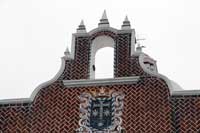
|
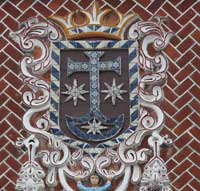
|
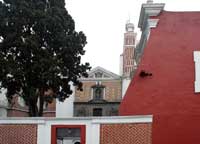
|
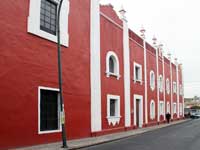
|
The plain exterior of part of the complex; the bell tower (below) |
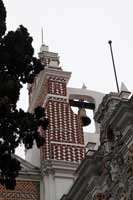
|

|

|
Return to page 1.
Work Consulted:
Guía. Arquitectura representativa de la ciudad de Puebla. Puebla: Centro para la Conservación del Patrimonio Cultural Tangible e Intangible A. C., L'Anxaneta Ediciones, 2008.
 Go to the Mexico Index.
Go to the Mexico Index.
 Click here to return to index of art historical sites.
Click here to return to index of art historical sites.
 Click here to return to index of artists and architects.
Click here to return to index of artists and architects.
 Click here to return to chronological index.
Click here to return to chronological index.
 Click here to see the home page of Bluffton College.
Click here to see the home page of Bluffton College.

